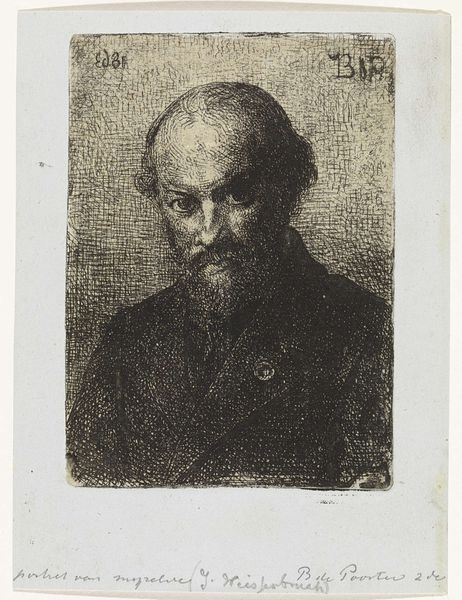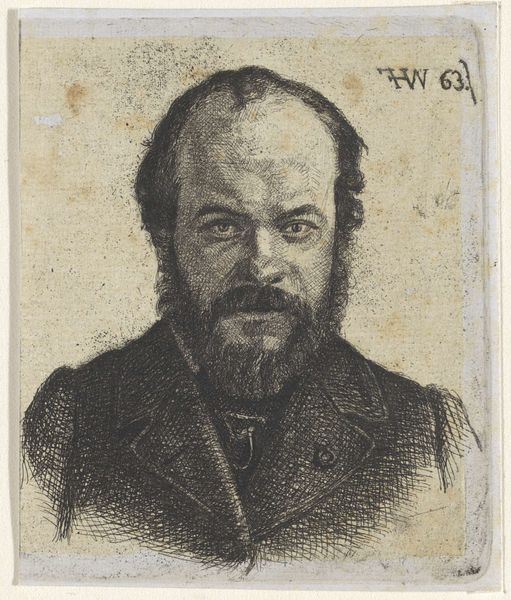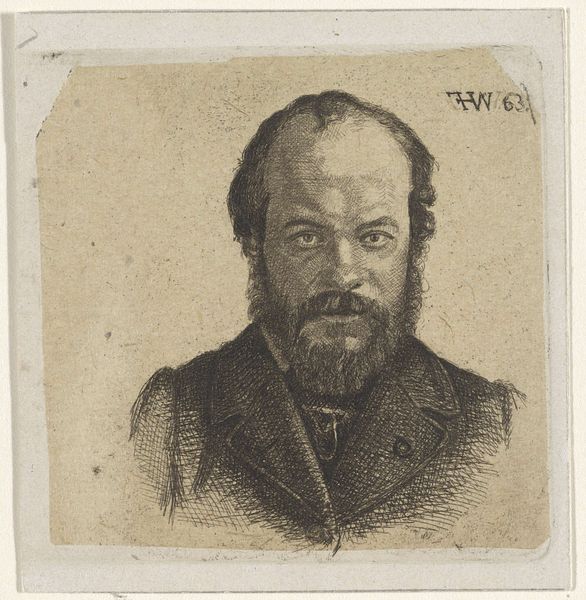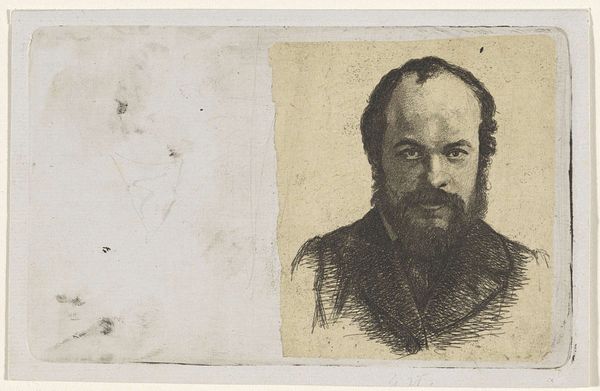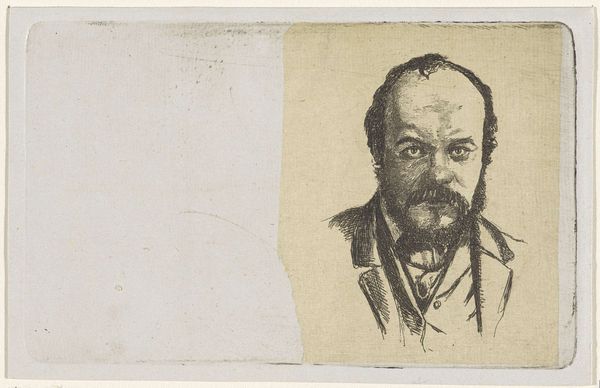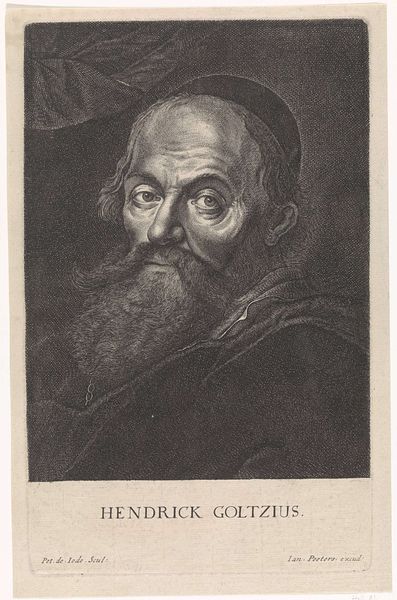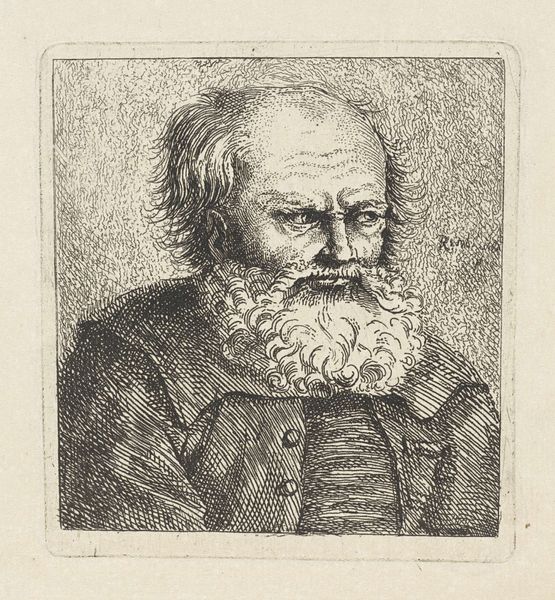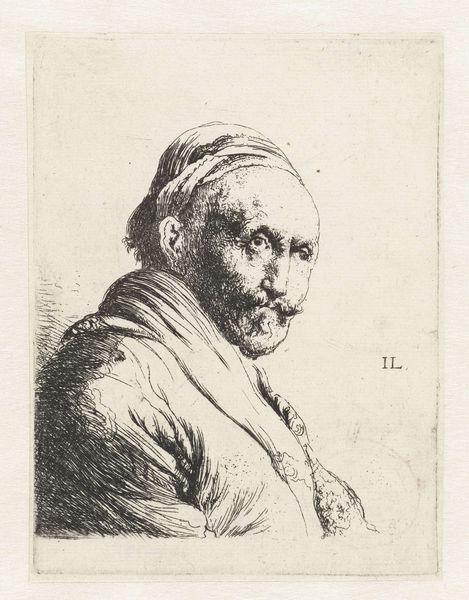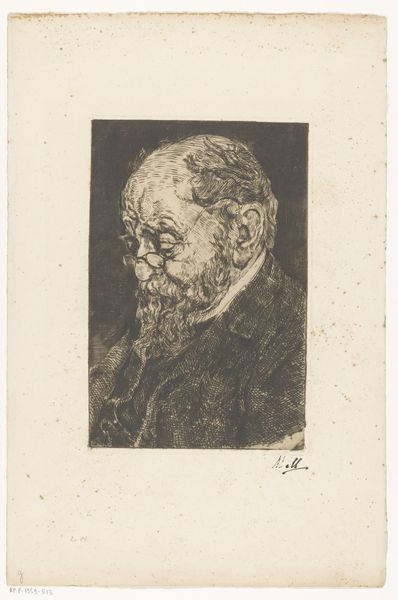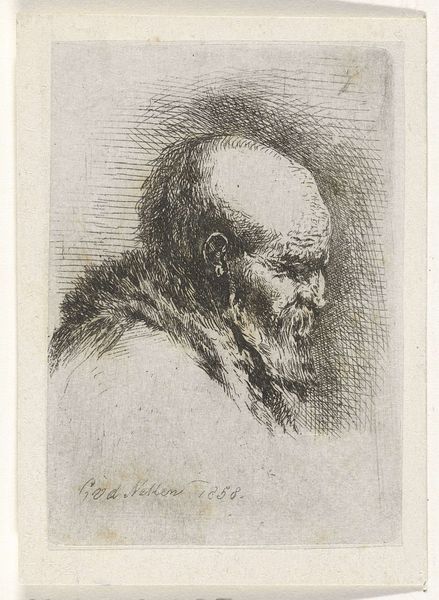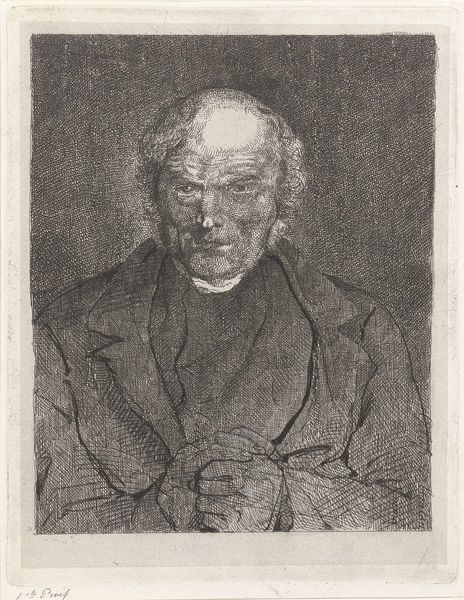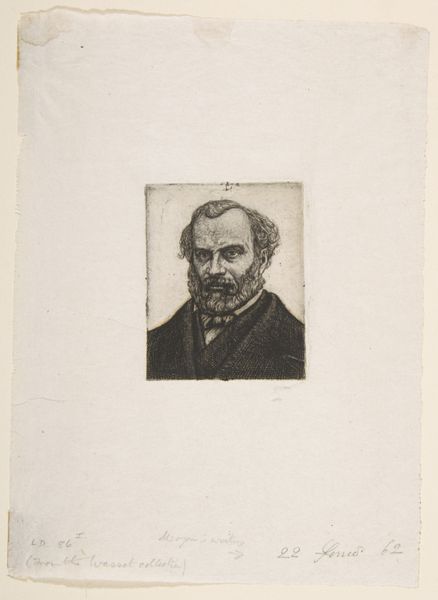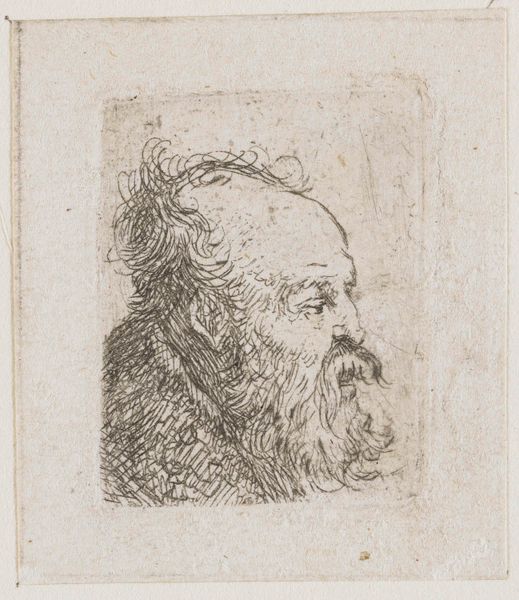
drawing, print, paper, ink, graphite, charcoal
#
portrait
#
pencil drawn
#
drawing
#
self-portrait
# print
#
pencil sketch
#
charcoal drawing
#
paper
#
ink
#
pencil drawing
#
graphite
#
pencil work
#
charcoal
Dimensions: height 110 mm, width 79 mm
Copyright: Rijks Museum: Open Domain
Editor: Here we have Bastiaan de Poorter’s self-portrait from 1863, created using drawing techniques with ink, graphite, and charcoal on paper. It feels remarkably intimate; like a direct, almost confrontational gaze from the artist. What's your interpretation? Curator: I see the etching as a product of its time, a period heavily influenced by the rise of individual expression and self-awareness fostered by burgeoning democratic ideals. How does an artist, particularly one from the middle class, begin to represent themselves? This portrait exists within a context of evolving social structures and increasingly accessible artistic tools. Editor: Interesting. I hadn’t considered the social accessibility aspect. Curator: Precisely. Consider the printmaking medium. Prints offered greater affordability and wider distribution compared to painted portraits, challenging the traditional dominance of the aristocracy in image-making. Editor: So, it democratizes portraiture? Curator: Indeed. It puts self-representation into the hands of a broader demographic, reflecting a shift in societal power dynamics. This wasn't simply about vanity; it was a claim to visibility and agency within a changing social landscape. How does the somewhat melancholic mood play into this claim, do you think? Editor: I guess that the direct gaze and sombre expression aren't just personal; they become almost a statement of individual worth outside of established hierarchies. Curator: Exactly. It moves portraiture away from celebrating solely wealth and status toward capturing internal states of being and the value of lived experience in the modern era. This resonates deeply, especially considering the changing socio-political context of the 19th century. Editor: It makes me rethink what a self-portrait could signify back then; it wasn't just about looks. Curator: Right, and the proliferation of printed images undoubtedly helped shape public perception and the role of the individual artist in society. Hopefully, this conversation allows us to question some of our pre-conceived notions and explore this work from a different vantage.
Comments
No comments
Be the first to comment and join the conversation on the ultimate creative platform.
